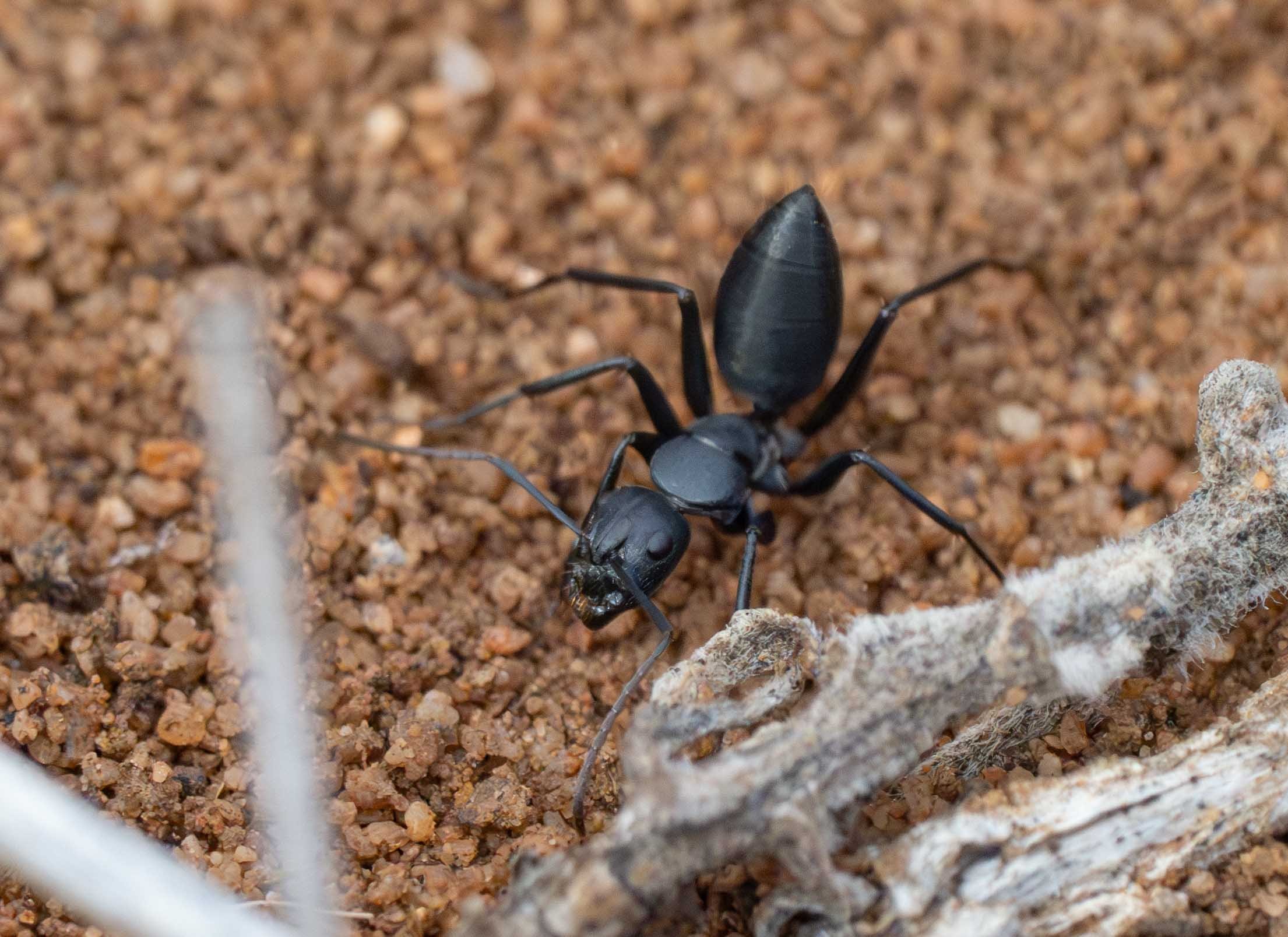
This posture, with abdomen raised vertically, is typical of the species. Despite appearances, they don't sting ... but they can bite.
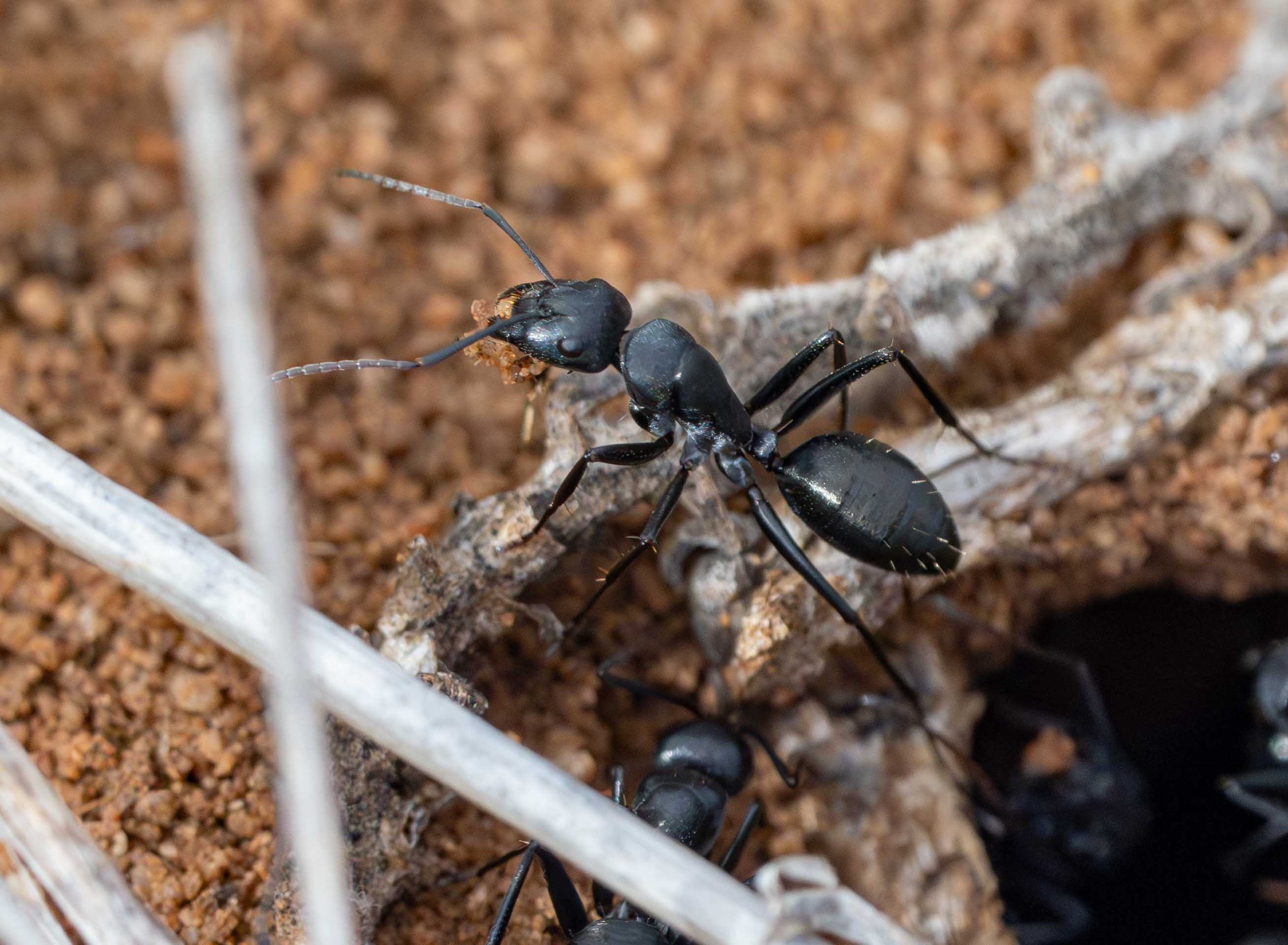
This subspecies is common in arid and semi-arid woodlands across southern Australia (ref. 4).

Some Camponotus species nest in wood ... hence one of their common names, 'Carpenter Ants' ... but this colony was definitely excavating soil. The diggings forming the mound was evidence of a lot of past work.

Excavations ongoing.
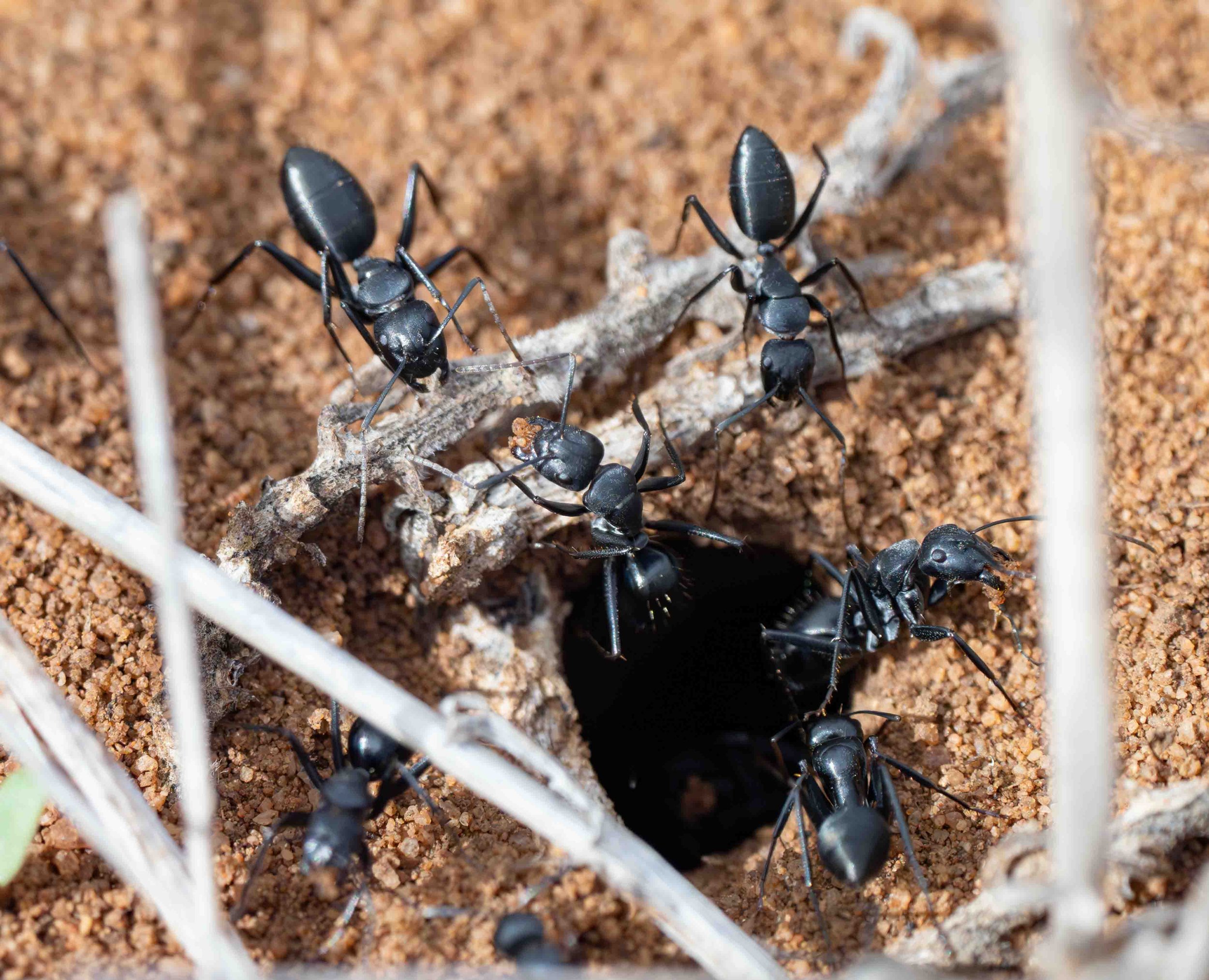

The volcano-like appearance is certainly reminiscent of a funnel-ant nest. But there was just this one mound. And the opening was relatively small.


Might this be the home owner (a species of Camponotus I believe)?
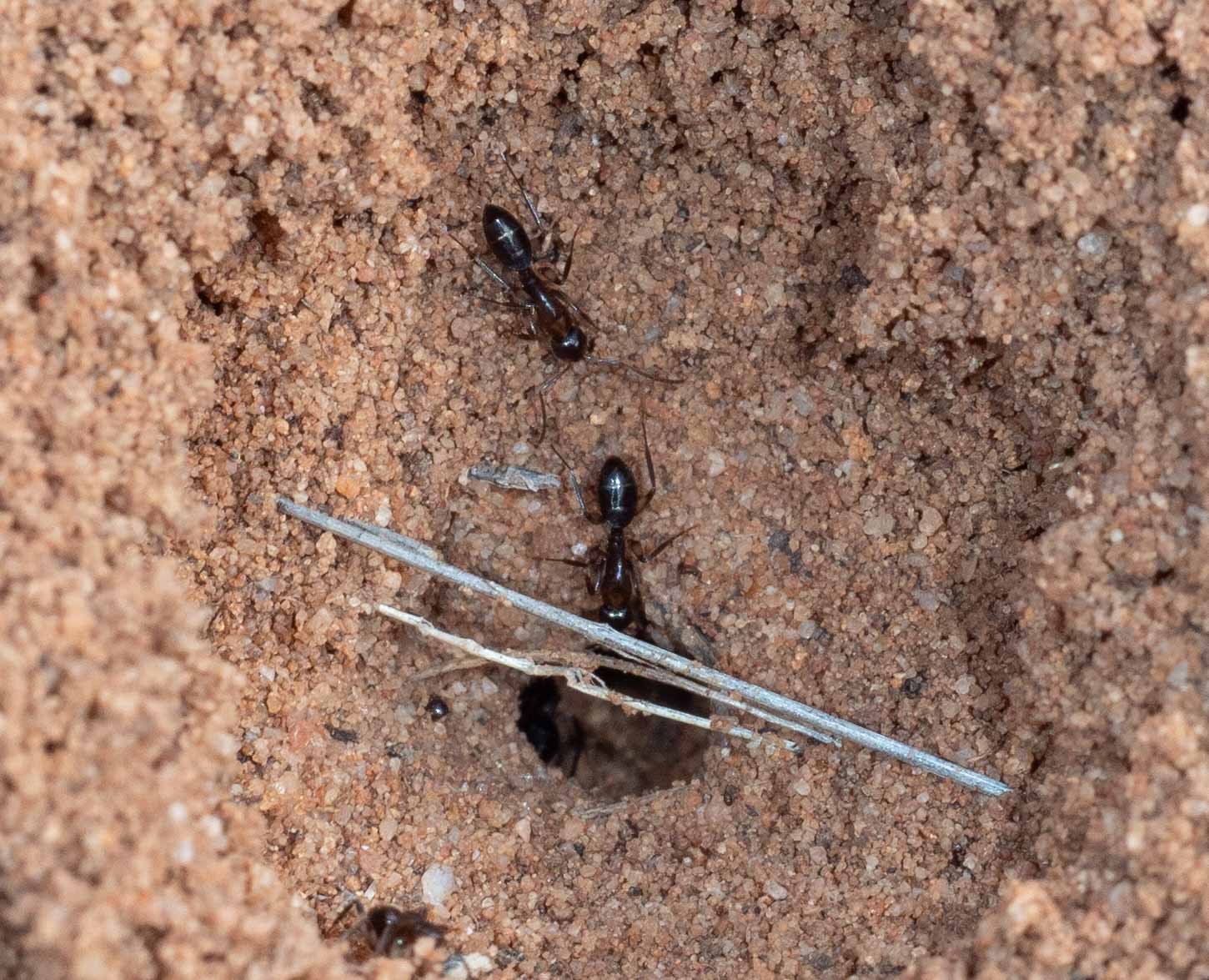
These small, shiny black ants were purposefull moving in and out of the nest. So either they are indeed the rightful homeowners, or they are moving in. Another puzzle I didn't have time to solve. Perhaps an accurate species ID will help. Later.
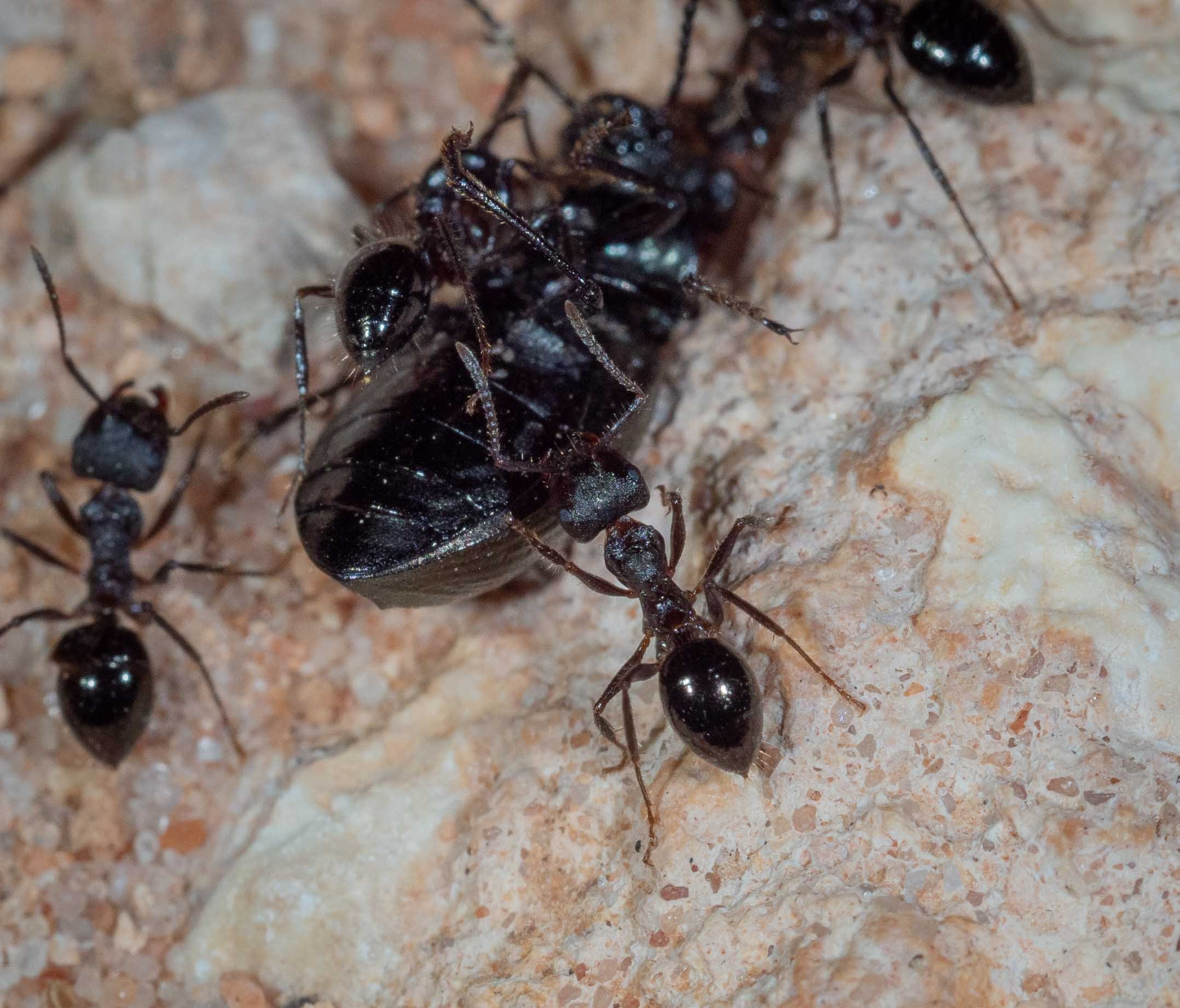
Notoncus are described as general predators, foraging on the ground. These little ants seem a good match, both in behaviour and general appearance.
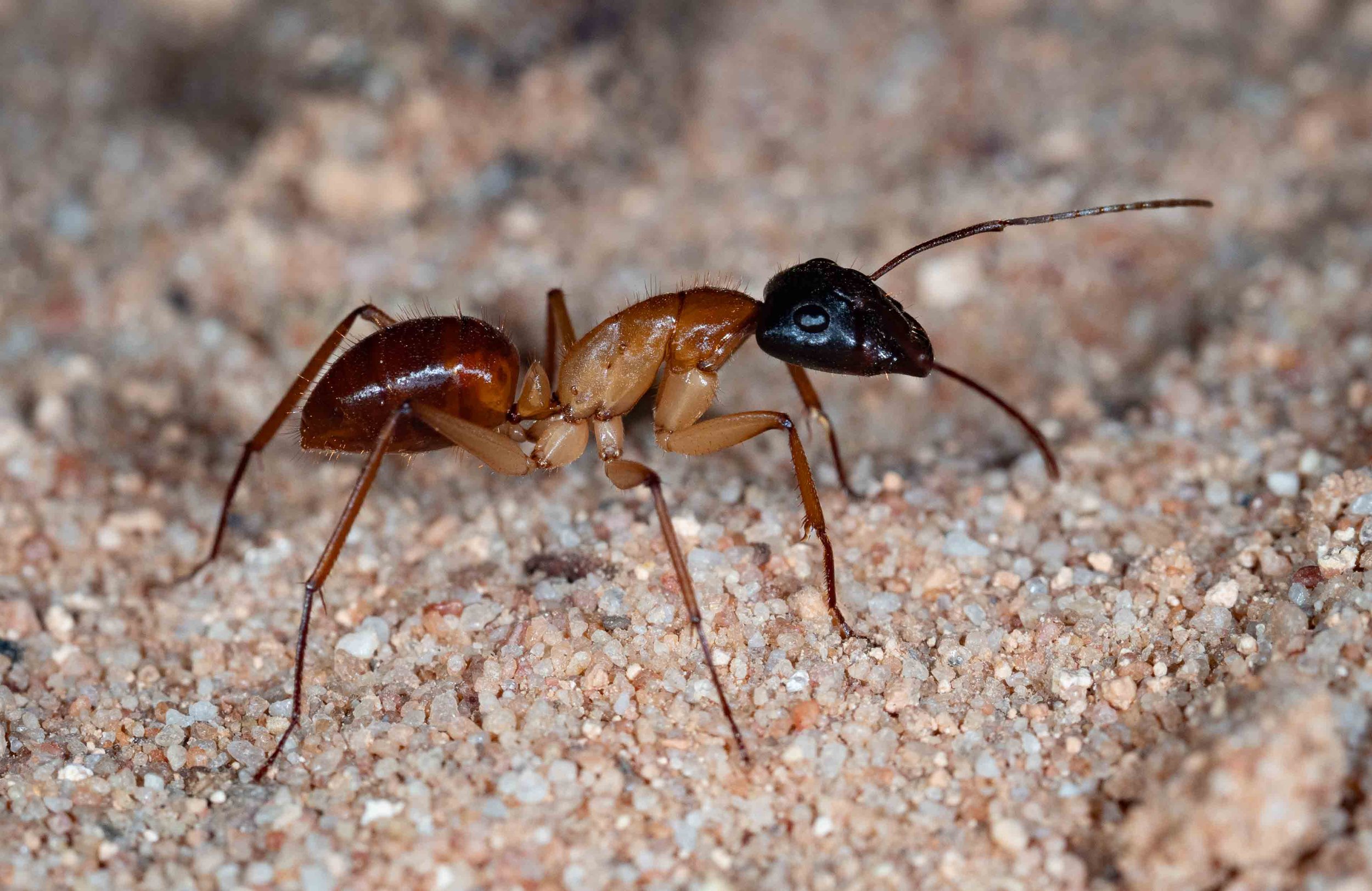
Ants of this genus are commonly called Sugar Ants or Carpenter Ants ... however, the taxon is so large and diverse, these references to their food preferences and nesting habits don't necessarily apply.
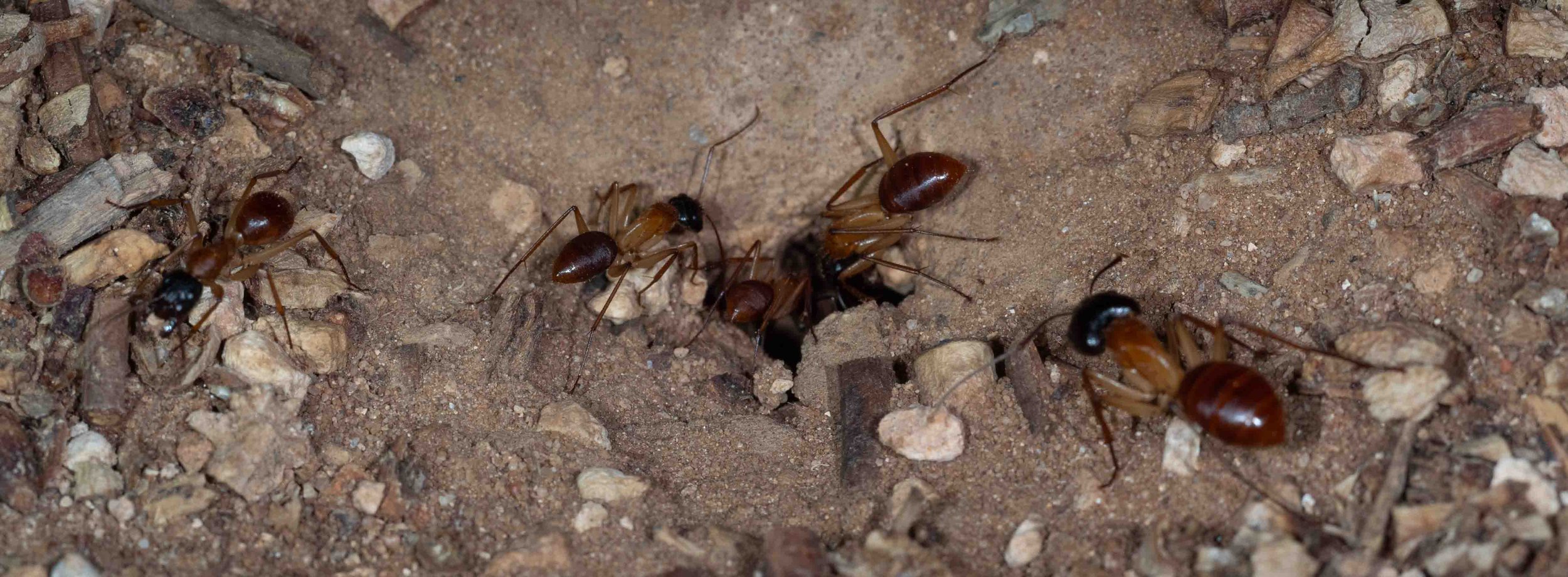
These ants were clearly nesting below ground, rather than inside a piece of wood, so not carpenters at all.
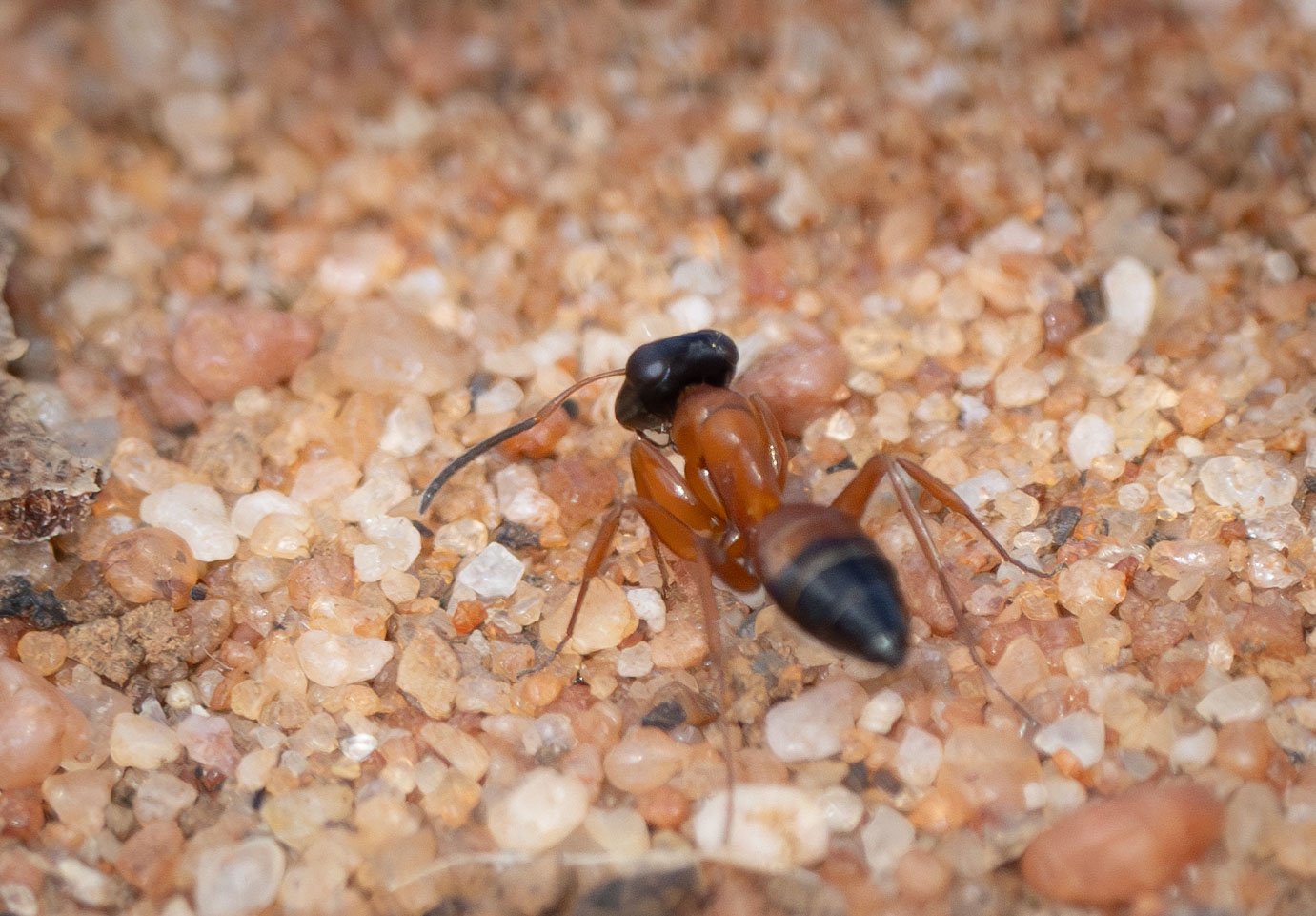
Just one of these sighted.













